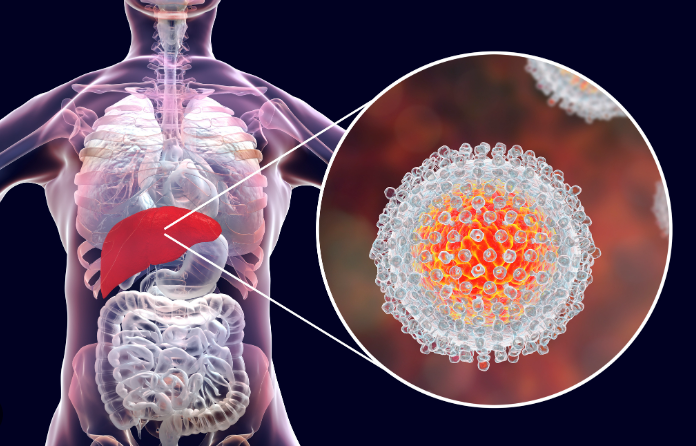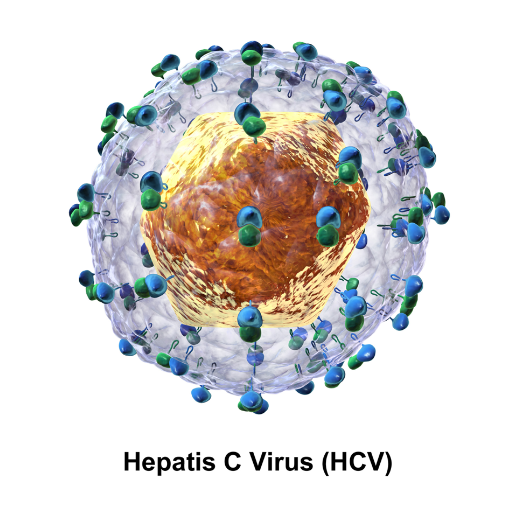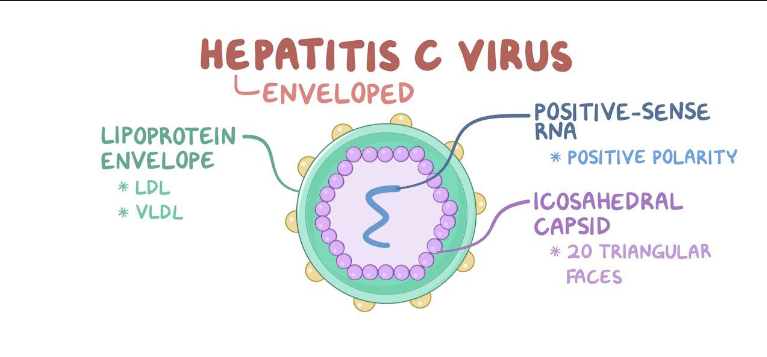Your guide to causes, symptoms and treatments for this potentially dangerous liver infection of hepatitis c
Our bodies contain all of the internal organs that are necessary to sustain our life. However, one organ in particular—the liver—is so important to maintaining life that its name itself suggests this.
The liver, the largest solid organ in the body, weighs between 3.1 and 3.6 pounds on average in an adult and performs a variety of vital functions that keep your body functioning at its best. As a component of the digestive system, it aids in the breakdown of food. However, the liver also removes toxins from the blood. The liver is an organ that can regenerate, unlike other organs. This implies that the liver may grow back if a portion of it is removed. However, there are situations when an infection or injury to the liver causes more harm than it can heal, which can result in liver failure or other potentially fatal issues. One such potential liver issue is hepatitis C.
Also Read-Hepatitis B : A Patient’s Guide To Hepatitis B And Its Symptoms

Risk factors of hepatitis c
“Hepatitis C is transmitted through contaminated blood into blood of the patient,” Lee says. This means that people who come into contact with blood regularly may be at higher risk of developing the disease.

Higher-risk categories include:
- Although infection rates in other demographic groups are rising, those born between 1945 and 1965 have the highest incidence of hepatitis C infection. According to a 2018 study that was published in the American Journal of Public Health, the opioid crisis and the concurrent rise in injectable drug use are linked to the rise in hepatitis C infection.
- People who had blood transfusions, received blood products or had an organ donation prior to July 1992, when screening for hepatitis became a routine part of blood and organ donation.
- People who use and share intravenous needles.
- People who receive a tattoo in an unlicensed tattoo parlor, where sterilization and hygiene procedures may not be adequate.
- People who’ve been on kidney dialysis.
- People who have lived or worked in a prison.
- Those who have HIV infection.
- Babies born to hepatitis C virus-positive mothers.
- Those who work in healthcare and handle needles and blood include phlebotomists.

Symptoms
One of the big problems with hepatitis C is that it may be present with few or no noticeable symptoms, so you could be infected and pass the virus on to others without ever knowing it.

“Many patients infected with hepatitis C do not show any clinical symptoms except perhaps mild fatigue or tiredness,” Lee says. As such, there are “millions of Americans who are infected with hepatitis C who do not show overt signs of infection.”
When symptoms do arise, they may include:
- Fatigue.
- Sore muscles and joint pain.
- Dark-colored urine.
- Jaundice (yellowing of the skin and eyes).
- Nausea.
- Loss of appetite.
- Fever.
- Bleeding or bruising easily.
- Itchy skin.
- Abdominal pain and swelling.
- Swelling (edema) in the legs.
- Weight loss.
- Spider angiomas (the appearance of spidery blood vessels on the skin).

When symptoms do appear, they typically begin to arise three months after exposure to the virus.
Diagnosis
If your doctor suspects you might have hepatitis C, in addition to a physical examination, you’ll likely undergo several tests to confirm the diagnosis. Your doctor can use a couple of blood tests to check for the presence of the hepatitis C virus.

These include:
- Screening for hepatitis C virus antibodies. This test looks for markers in your blood that signal the presence of the hepatitis C virus. Antibodies are the way the body tries to fight off infection, so if hepatitis C antibodies are found in the blood, it means you’ve been infected with the virus. However, the infection may not still be present if your body has already cleared it. The immune system remembers past infections and maintains antibodies to combat viruses in case you become re-infected later.
- Hepatitis C RNA test. If your antibody test is positive, you’ll likely also have a hepatitis C RNA test that looks for RNA, the genetic material that’s specific to the hepatitis C virus. This test tells your doctor how much virus is currently in your blood and can help guide next steps in treatment. You may have this test multiple times throughout treatment to gauge how well it’s working.
- Genotype test. This test tells your doctor which strain of the hepatitis C virus you have. The U.S. Department of Veterans Affairs reports that there are six genotypes of hepatitis C around the world, but that genotypes 1, 2 and 3 are most common in the U.S. These genotypes are further classified as genotype 1a or 1b, genotype 2a, 2b or 2c and genotypes 3a or 3b. This information is very helpful in finding the right medication to fight the disease.

In addition to blood tests, you may also undergo:
- Imaging tests. Your doctor may order an ultrasound or CT scan of the liver to get a better view of how much damage has been done to the liver. Lee says imaging tests are also used to screen for liver cancer.
- Liver biopsy. You may need to have a small piece of tissue removed from the liver to be analyzed in the lab, particularly if liver cancer is suspected.
Treatment
It used to be that hepatitis C infection would require weekly injections and oral medications that had lots of unpleasant side effects. But Lee says that recently, “treatment of hepatitis C has undergone a paradigm shift. Gone are the cumbersome interferon injections, and we now have oral pill therapy, which can achieve a near 97% cure rate.”

These new medications, called direct-acting antiviral medicines, have been helping treat hepatitis C since 2013. These therapies “can cure any genotype from 1 through 6, eliminating complexity of different regimens and different side effects,” Lee says.
What’s more, “treatment of hepatitis C decreases liver mortality and liver cancer in these patients.” In fact, treatment for hepatitis C has become “so simple and highly successful,” Lee says, that now people with the virus can be candidates to donate liver tissue to others.
Also read-Hepatitis A : A Patient’s Guide To Hepatitis A And Its Symptoms
images source: Google
Disclaimer: The opinions and suggestions expressed in this article are solely those of the individual analysts. These are not the opinions of HNN. For more, please consult with your doctor.




































